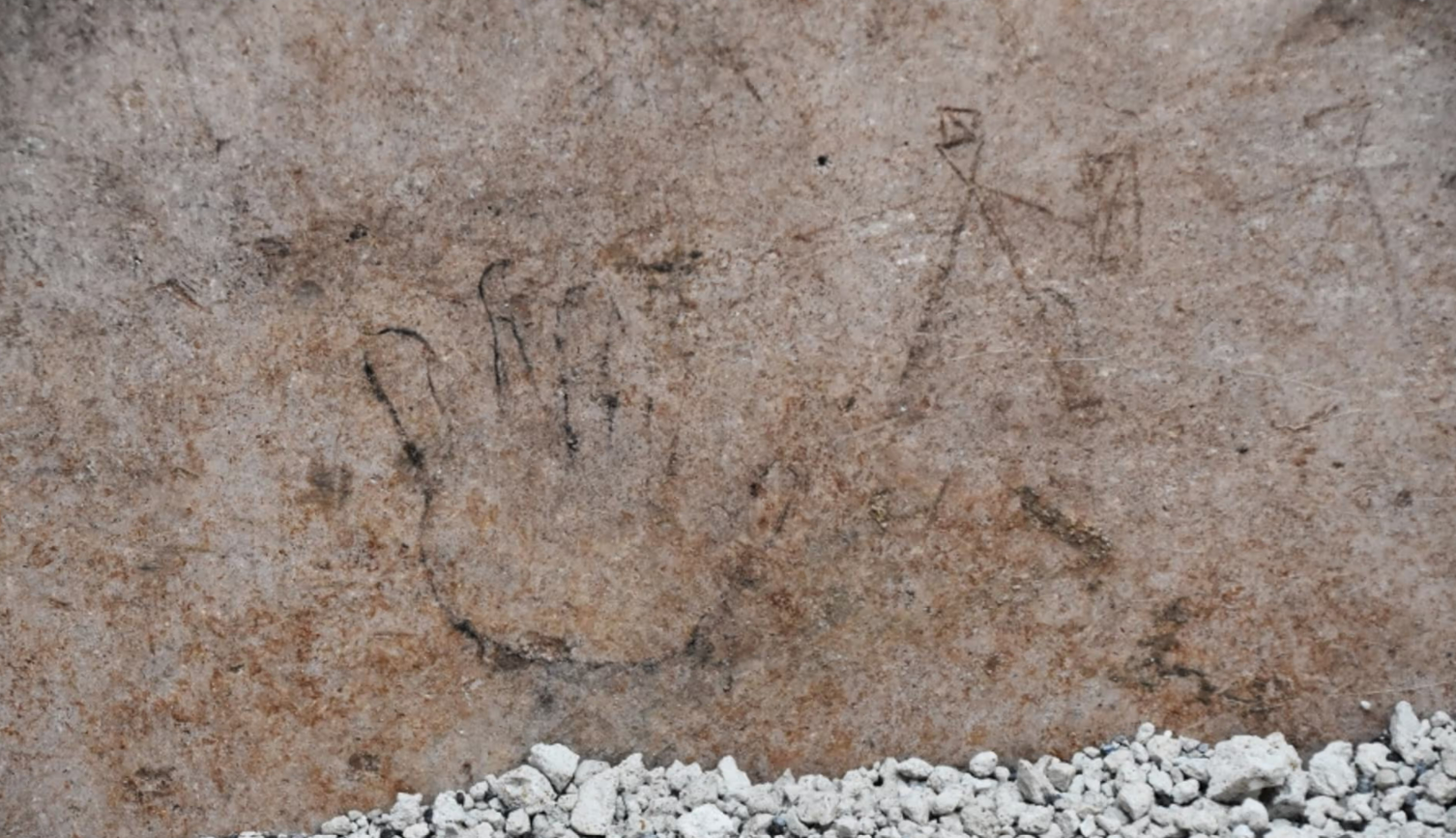Ancient graffiti of battling gladiators has been found among the ruins of the Roman city Pompeii. Archaeologists on the project believe these scribbles reveal an insight into the mindset of ancient Romans and their often-bloody ways.
The charcoal doodles were recently revealed among the remains of a courtyard belonging to Casa del Secondo Cenacolo Colonnato (Colonnaded House of the Second Last Supper) in southern Italy’s Pompeii Archaeological Park.
The researchers say the drawings were created by children, likely aged between 5 and 7 years old. This idea was affirmed by the discovery of a small hand outlined in charcoal against the wall.
Reporting the findings in Pompeii’s Excavations e-Journal, they explain how the graffiti suggest ancient Roman kids visited amphitheaters to watch the bloody spectacles of violence – and were likely to be very familiar with the savage ways of life in the ancient world.
“It seems legitimate to hypothesize, based on literary evidence, that children were present during these shows,” the researchers write.
“The drawings from the Casa del Cenacolo Colonnato confirm this hypothesis: what we see is testimony direct of the encounter between an infantile soul – very receptive and full of imagination – and the cruel pastime of the time, which in addition to gladiatorial games and hunts with animals, also involved staging executions of criminals and slaves,” they added.
The outline of a small hand, perhaps of a child, was found among the graffiti.
Image credit: Pompeii Archaeological Park
They even go onto speculate how this early exposure to brutality may have profoundly influenced the dog-eat-dog world of Roman society.
“Several recent studies have highlighted a link between early exposure to violent images and films and high levels of aggression in adolescence and adulthood. Maybe one day, we will be able to understand how much these phenomena had an impact on Roman society 2,000 years ago,” they conclude.
Along with the doodles, the recent excavations uncovered the remains of a man and woman in the House of the Painters at Work. This villa picked up its name as it was filled with paint pots and mixing bowls, as if a team of workers had to flee the house when the infamous catastrophe struck.
Inside the Casa del Secondo Cenacolo Colonnato (Colonnaded House of the Second Last Supper) of Pompeii.
Image credit: Pompeii Archaeological Park
Pompeii was destroyed in 79 CE when the volcano Mount Vesuvius erupted, killing thousands of people in the city and nearby settlements of Herculaneum, Oplontis, and Stabiae.
The eruption showered Pompeii and the surrounding towns with over 6 meters (19 feet) of ash and other volcanic debris. Devastating as it was, it preserved the settlements for centuries, providing modern-day researchers with an unbelievably clear insight into the daily life of ancient Rome.
“More and more, Pompeii reveals new wonderful discoveries and confirms itself as an extraordinary treasure chest,” Gennaro Sangiuliano, Italy’s Minister of Culture, said in a statement about the recent discovery.
Source Link: Graffiti Found At Pompeii Shows Roman Kids Had An Eye For Violence
